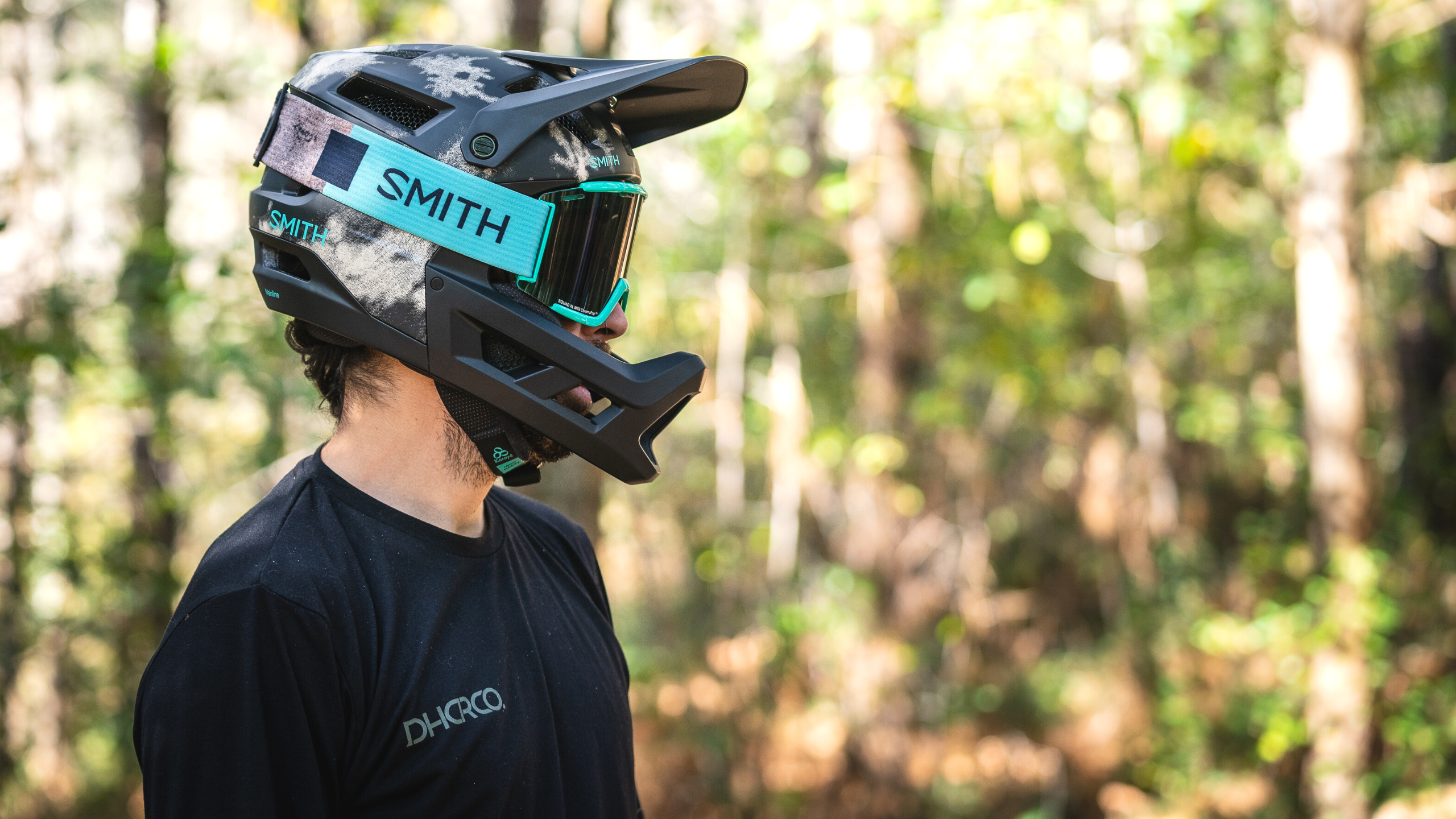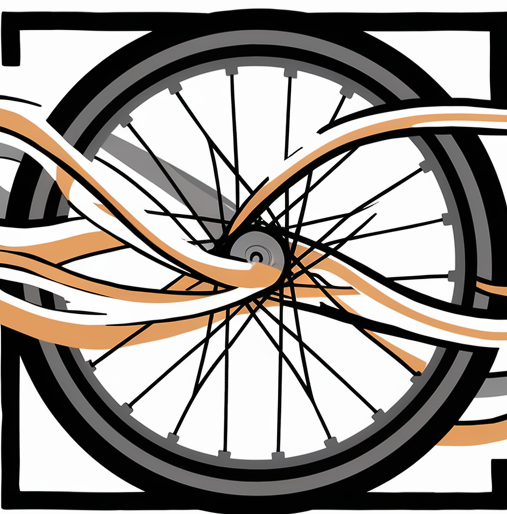No, you should not wear a bicycle helmet on a motorcycle. Bicycle helmets are not designed for the high speeds and impact forces of motorcycle riding.
Motorcycle safety is crucial. Helmets are your primary protection. But not all helmets are equal. Bicycle helmets are made for low-speed impacts. Motorcycle helmets, on the other hand, offer higher protection. They are built for high-speed crashes. Using the right helmet can be a lifesaver.
In this blog, we will explore why a bicycle helmet is not suitable for motorcycle riding. We will also discuss the differences between bicycle and motorcycle helmets. Understanding these differences can help ensure your safety on the road. So, let’s dive into the details and learn why helmet choice matters.

Credit: apolloscooters.ca
Helmet Types And Differences
Bicycle helmets are designed for cycling, offering less protection than motorcycle helmets. Motorcycle helmets are made to withstand higher speeds and impacts. Using a bicycle helmet on a motorcycle can be unsafe, as it lacks the necessary safety features for motorcycling.
Always choose the helmet specifically designed for your activity.
Choosing the right helmet can be a life-saving decision, especially when deciding between bicycle helmets and motorcycle helmets. Both are designed to protect your head, but they serve different purposes. Understanding their differences is crucial for your safety on the road.Bicycle Helmets
Bicycle helmets are lightweight and designed for comfort during long rides. They are made with a hard plastic shell and padded interior, providing adequate protection for cycling accidents. These helmets focus on ventilation, ensuring your head stays cool as you pedal. However, their light design means they lack the robust protection needed for high-speed impacts. If you’re thinking about using a bicycle helmet on a motorcycle, consider this: would you wear flip-flops on a mountain hike? It’s about using the right gear for the right activity.Motorcycle Helmets
Motorcycle helmets are built for durability and maximum protection. Their thick, heavy-duty design can withstand high-speed impacts, significantly reducing the risk of head injuries. These helmets often come with visors to protect your eyes from debris and the wind. They might feel heavier, but that’s a trade-off for the enhanced safety features they offer. Imagine the feeling of security when you’re cruising down a highway at 60 mph. Wouldn’t you want the best protection possible? Choosing the right helmet isn’t just about legality; it’s about safeguarding your life. Next time you ride, ask yourself: is your helmet up to the task?Design And Construction
Wearing a bicycle helmet on a motorcycle is not safe. Bicycle helmets lack the strength for high-speed impacts. Motorcycle helmets provide better protection, meeting safety standards for road use.
When it comes to choosing the right helmet for your ride, understanding the design and construction differences between bicycle helmets and motorcycle helmets is crucial. You might think that helmets are all the same, but their design and construction are tailored to their specific uses. Each helmet is crafted to meet the demands of its environment, ensuring maximum safety and performance. Let’s dive into how these helmets are built and what makes them unique. ###Materials Used
Bicycle helmets are typically made from lightweight materials like expanded polystyrene foam with a thin plastic shell. This combination is perfect for protecting against lower-speed impacts and keeping the helmet light. You might appreciate this design when cycling uphill, as every ounce counts. Motorcycle helmets, on the other hand, use more robust materials like fiberglass, Kevlar, or carbon fiber. These materials provide greater protection against high-speed impacts. They also often include a thick inner liner that absorbs energy more effectively, which is crucial when you’re riding at highway speeds. ###Impact Resistance
Bicycle helmets are designed for single-impact events. They’re meant to protect your head during a fall or collision at cycling speeds. After a significant impact, a bicycle helmet should be replaced, as its ability to protect you is compromised. Motorcycle helmets are built to withstand multiple impacts in a single accident. They’re tested to meet rigorous standards, ensuring they absorb energy from various angles and forces. Think about this: would you trust a helmet that’s not designed for the speed and impact levels of a motorcycle ride? When choosing a helmet for your motorcycle, remember that the design and construction play a vital role in your safety. Ask yourself if a bicycle helmet can truly offer the protection you need when you’re riding at 60 miles per hour or more. Your safety is worth the investment in a helmet designed specifically for motorcycling. Have you ever considered how a helmet’s design could influence your safety? It’s not just about style or comfort—it’s about making sure you’re protected when it matters most.Safety Standards Comparison
When riding a motorcycle, safety is paramount. Many wonder about wearing bicycle helmets while riding motorcycles. Understanding safety standards helps in making informed decisions. This section explores the differences between bicycle and motorcycle helmet standards. These differences matter for your safety.
Bicycle Helmet Standards
Bicycle helmets follow specific safety standards. In the U.S., CPSC standards are common. These standards focus on impact protection. Bicycle helmets are tested for slow-speed impacts. They must withstand minor falls. Their design aims at protecting during bicycle accidents. Lightweight materials make them comfortable. But they might not handle high-speed crashes well.
Motorcycle Helmet Certifications
Motorcycle helmets meet stricter safety certifications. DOT, ECE, and Snell are popular certifications. These standards ensure helmets protect at high speeds. Motorcycle helmets undergo rigorous testing. They must handle severe impacts and penetration. The materials used are durable and robust. They are designed for maximum protection. Wearing a motorcycle helmet offers better safety on the road.
Functionality And Purpose
Understanding the functionality and purpose of a helmet is crucial. Bicycle helmets and motorcycle helmets serve different needs. Both protect the head, but their designs and features vary significantly. Each helmet type is crafted for specific activities. This affects their suitability for different vehicles.
Head Protection
Head protection is the primary function of any helmet. Bicycle helmets are lightweight. They protect against falls and collisions at lower speeds. Motorcycle helmets are heavier. They withstand high-impact crashes. The materials differ greatly. Bicycle helmets use lighter materials. Motorcycle helmets use robust materials like fiberglass or Kevlar. This ensures optimal protection on highways.
Additional Features
Motorcycle helmets offer more features than bicycle helmets. They have visors to shield the eyes. This is crucial at high speeds. Ear protection is another key feature. It reduces wind noise. Bicycle helmets lack these attributes. Ventilation is a focus for bicycle helmets. It keeps riders cool during long rides. Motorcycle helmets prioritize durability and safety. Their design supports high-speed travel.
Risks Of Using Bicycle Helmets On Motorcycles
Using a bicycle helmet on a motorcycle poses significant safety risks. Bicycle helmets lack the necessary protection for high-speed impacts. Motorcycle helmets are specifically designed to handle greater forces and provide more coverage.
Wearing a bicycle helmet while riding a motorcycle might seem like a simple solution, especially if you’re just going for a quick spin. However, this choice can expose you to significant risks. Understanding these risks can help you make safer decisions on the road and protect not just your head, but your life.Inadequate Protection
Bicycle helmets are designed for the lower speeds and impact scenarios typically encountered in cycling. They lack the robust construction needed to withstand the high-speed impacts common in motorcycle accidents. Imagine cruising at highway speeds and suddenly facing an obstacle; a bicycle helmet simply won’t provide the robust protection required. Motorcycle helmets are specifically engineered to endure severe impacts and protect your head from various angles. They offer full-face protection, which is crucial if you take a fall. Do you feel confident relying on a helmet meant for a leisurely bike ride when you’re on a powerful motorcycle?Increased Injury Risk
Wearing a bicycle helmet on a motorcycle can actually increase your risk of injury. The design and materials of bicycle helmets are optimized for falls at lower speeds. They often lack the necessary padding and structural integrity to protect against high-impact crashes. Consider this: motorcycle helmets are built with stronger shells and more substantial padding to absorb the energy from high-speed collisions. Using a bicycle helmet could result in greater head trauma in an accident. Think about your loved ones and the impact on them if you’re injured due to insufficient protection. Next time you’re tempted to grab your bicycle helmet for a motorcycle ride, ask yourself if it’s worth the risk. Prioritizing safety means choosing the right gear for the right vehicle. Make a conscious decision that keeps you safe and ensures peace of mind on every ride.
Credit: blog.smithoptics.com
Legal Implications
Wearing a bicycle helmet on a motorcycle might seem convenient. Yet, it’s crucial to understand the legal implications. Different regions have specific helmet laws for motorcycle riders. Knowing these laws helps in staying compliant and safe.
Helmet Laws And Regulations
Motorcycle helmet laws vary across countries and states. Most regions require helmets designed for motorcycle use. These helmets meet specific safety standards. Bicycle helmets usually don’t meet these standards. They offer less protection in high-speed crashes. Using a bicycle helmet on a motorcycle may not satisfy legal requirements.
Authorities enforce helmet laws for rider safety. The right helmet can reduce injury risks. Always check local regulations before riding.
Consequences Of Non-compliance
Ignoring helmet laws can lead to serious consequences. Riders may face fines or penalties. These penalties vary by region and severity of the offense. Beyond fines, there’s a greater risk of injury. Bicycle helmets offer limited protection in motorcycle accidents. Non-compliance can also affect insurance claims. Insurers may deny claims if safety laws are violated.
Riding without an approved helmet can result in legal action. Authorities prioritize safety and compliance. Staying informed and compliant is essential for every rider.
Expert Opinions And Studies
Experts agree that wearing a bicycle helmet while riding a motorcycle is unsafe. Studies show that motorcycle helmets provide better protection due to their design. Choosing the right helmet is crucial for safety on the road.
Wearing a bicycle helmet on a motorcycle might seem convenient, but is it safe? This question has sparked debates among riders and safety experts. To find the answer, we need to look at expert opinions and studies. Understanding the facts can help you make an informed decision about your safety gear.Research Findings
Research shows that bicycle helmets and motorcycle helmets are designed for different levels of impact. Bicycle helmets are tested for lower-speed crashes, typically around 15 mph. Motorcycles, however, often travel at much higher speeds, making the potential impact far greater. A study published in a safety journal compared the materials and construction of both types of helmets. It found that bicycle helmets lack the reinforced structure necessary to absorb high-impact forces. This means they might not offer sufficient protection in a motorcycle accident.Safety Expert Recommendations
Safety experts recommend wearing helmets specifically designed for motorcycles. Motorcycle helmets undergo rigorous testing and must meet strict safety standards, such as DOT or ECE certifications. These standards ensure the helmet can withstand high-speed impacts. Experts often stress the importance of using the right gear for the right activity. You wouldn’t wear running shoes to hike a mountain, so why wear a bicycle helmet on a motorcycle? It’s about maximizing your safety. If you’re tempted to use a bicycle helmet for a quick trip, ask yourself: Is saving a little time worth risking your safety? Your head is one of your most vital assets, and protecting it should be a priority. In conversations with seasoned riders, many share a common wisdom: investing in proper safety gear is non-negotiable. Personal stories of accidents highlight the life-saving role a good motorcycle helmet can play. Wouldn’t you want to ride with peace of mind knowing you’re well-protected? Consider these expert insights and research findings as you gear up for your next ride. Your safety—and peace of mind—could depend on it.
Credit: www.salvilaw.com
Alternatives To Bicycle Helmets
Wearing a bicycle helmet on a motorcycle is unsafe and not recommended. Motorcycle helmets offer better protection and meet higher safety standards. Choose a proper motorcycle helmet for your rides.
Alternatives to bicycle helmets for motorcycle use are crucial for safety. Bicycle helmets aren’t designed for high-speed impacts. They lack the protection needed for motorcycle riding. It’s important to explore suitable helmet options. These ensure maximum protection and compliance with safety standards.Appropriate Helmet Options
Motorcycle helmets come in various styles and types. Full-face helmets offer the most protection. They cover the entire head and face. Modular helmets provide flexibility. Riders can flip up the front section. Open-face helmets cover the head but not the face. They are less protective but more comfortable in hot weather. Dual-sport helmets are versatile. They work for both on-road and off-road riding. Choose a helmet certified by safety organizations. Look for DOT, ECE, or Snell certification.Selecting The Right Gear
Proper gear enhances safety and comfort. A well-fitted helmet is essential. Measure your head to find the correct size. The helmet should fit snugly. It should not move when you shake your head. Try on different brands and styles. Comfort is important for long rides. Pay attention to padding and ventilation. Good airflow prevents overheating. Consider the weight of the helmet. A lighter helmet reduces neck strain. Look for helmets with removable liners. They are easier to clean. Selecting the right gear ensures a safer riding experience.Frequently Asked Questions
Can You Use A Bike Helmet For A Motorcycle?
No, bike helmets are not suitable for motorcycles. Motorcycle helmets meet higher safety standards for impact protection. Always use a helmet specifically designed for motorcycles to ensure your safety.
Is A Bicycle Helmet The Same As A Motorcycle Helmet?
A bicycle helmet is not the same as a motorcycle helmet. Motorcycle helmets offer more protection. They are built for higher-speed impacts. Bicycle helmets are lighter and designed for lower-speed collisions. Always choose the helmet that matches your activity for safety.
What Is The Difference Between A Riding Helmet And A Bike Helmet?
A riding helmet is designed for equestrian activities, providing protection from falls and kicks. A bike helmet is built for cycling, offering impact protection from crashes. Each helmet type caters to specific risks of the respective sport.
Is A Bike Helmet Dot Approved?
Bike helmets are not DOT approved. DOT certification applies only to motorcycle helmets for road safety standards.
Conclusion
Riding a motorcycle? Use the right helmet for safety. Bicycle helmets lack necessary protection. Motorcycles need helmets designed for higher speeds. Comfort and protection matter. Prioritize your safety. Choose a helmet that meets motorcycle standards. Stay safe on the road.


